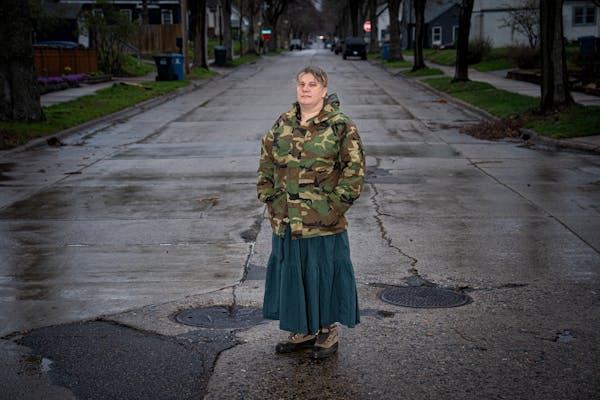Opinion editor's note: Editorials represent the opinions of the Star Tribune Editorial Board, which operates independently from the newsroom.
The long haul along W. 7th Street and Hwy. 5 from downtown St. Paul to Minneapolis-St. Paul International Airport and the Mall of America is enough to make a person question the wisdom of riding around in cars.
For much of the route, the street is in poor shape and the traffic is thick. The attractions that line the road are considerable — one-of-a-kind restaurants, curio shops, churches, bakeries and grocery stores, to say nothing of Historic Fort Snelling. And while those destinations make the trip worthwhile, some of them might attract even more visitors if they could be reached via a street in better repair or with a bit more parking.
Better still would be to get there easily without resorting to cars at all. Once upon a time, streetcars operated along W. 7th. Ramsey County leaders and transit planners have nurtured a dream of returning to those days. They envision a fleet of sleek electric streetcars running clean and convenient transit service along the route. They paint an attractive picture, at least until you get to that fundamental element of any transit question: how to get there from here.
Working estimates of the cost of the streetcar line suggest it would run about $2.1 billion. If that amount seems familiar, perhaps you're recalling one of the price tags assigned at different times to the Southwest light-rail project, which is now years behind schedule and hundreds of millions of dollars over budget. The similarity in figures is sheer coincidence, of course, and it depends on a bit of arbitrary selectivity: Earlier estimates of the Southwest project's cost were much lower, about $1.2 billion. The tab was estimated at about $2.2 billion for a while, but that figure is now only a fond memory, having given way to a new estimate of $2.86 billion.
Would the W. 7th streetcar have any better luck staying within its fiscal guardrails? It's hard to say, especially given that it would require replacement of the Hwy. 5 bridge over the Mississippi River. It's only prudent to assume that some unforeseen cost would drive the price higher.
So we're intrigued by the possibility, reported last weekend by the Star Tribune's Janet Moore, that a much cheaper option may be on the horizon in the form of an arterial bus-rapid transit line, or aBRT. Planners say the line could be established for a fraction of the cost envisioned for a streetcar, about $121 million.
As Moore's story notes, potential developers seem to prefer fixed-rail projects to bus service, and might be less interested in building new apartments without the long-anticipated streetcar. That reluctance is understandable. Any transit service that operates on a set of tracks is likely to be frequent, dependable and easy to predict. Buses, like the Route 54 that now operates along W. 7th, are prone to variations that may be somewhat harder to understand (If I want to get off at Penn and 51st, do I want the 22A or the 22B?).
By contrast, aBRT lines are faster, simpler and easier to comprehend. And riders seem to like them. Metro Transit General Manager Lesley Kandaras, in a Tuesday interview on MPR News, said aBRT lines did better than other types of service at retaining customers when ridership fell off during the pandemic. "Certain types of transit," she said, "such as our bus-rapid transit system … that's been a lot more resistant to ridership loss."
The aBRT line wouldn't gobble up as many parking spots as a streetcar line, and it would cover the distance faster than either a streetcar or the regular 54 bus. We hope planners give the aBRT option the serious consideration it deserves.

